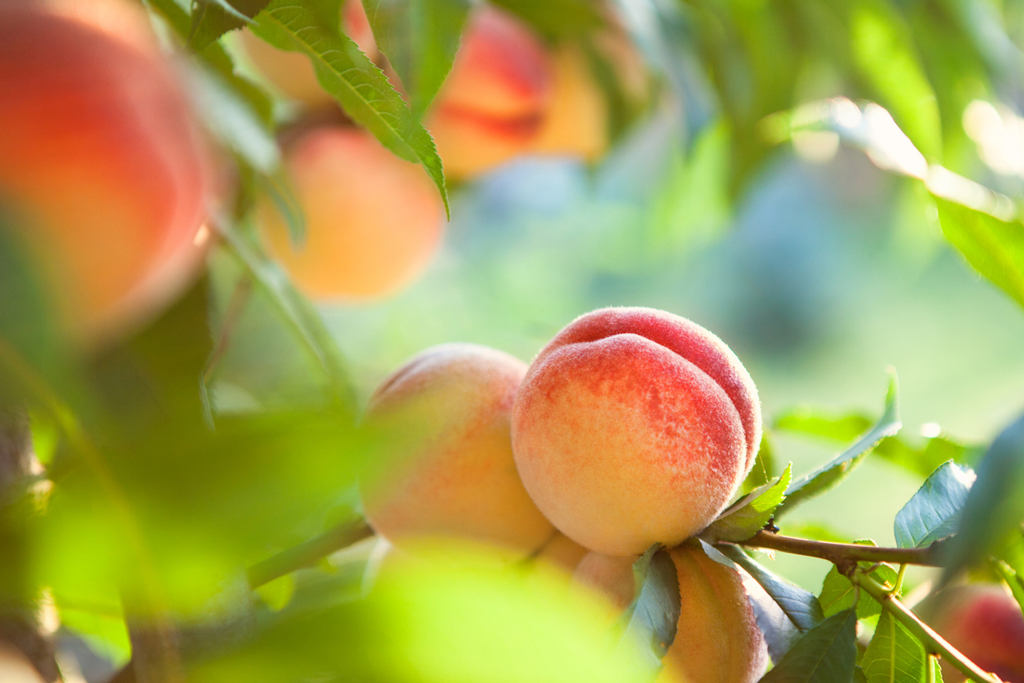The main idea of pruning peach trees is to remove the old, gray-colored, slow-growing shoots, which are non-fruit bearing. We want to keep the one-year-old, 18- to 24-inch, red-colored bearing shoots. Removing 40 percent of the tree annually stimulates new growth each spring.
The second objective of pruning is to lower the fruiting zone to a height that is comfortable to harvest the fruit. The third is to open the center of the tree. This increases air circulation, reduces disease pressure, and allows sunlight to accelerate fruit color and sweetness.
Tools needed for the job are loppers, hand saws, hand clippers, a rake for the pruned limbs, good gloves, head and face protection, a ladder, something to sharpen your tools, and lots of drinking water. It helps if you have someone there to encourage you. Be sure to pace yourself.
First, remove all dead limbs, rootstock suckers, and waterspouts in the lower 3 feet. Next, remove all shoots above the 7-foot mark other than the 18- to 24-inch, red-colored fruiting shoots. Then, remove all shoots that grow toward the middle of the tree. Picture an upside-down umbrella — that is what you want the finished product to look like.
Finally, remove all old, gray wood in the 3- to 7-foot fruit production zone.
Things to remember:
- Always wear protective clothing, eyewear, gloves, and a hat that covers your ears. Those limbs can really slap you hard.
- Pruning paint is not necessary.
If the pruning process sounds too confusing, go by your favorite nursery and let them give you a demonstration and other helpful hints. Or, shoot us a text at 512-769-3179 or email us (bottom of the column).
Peach tree production is the purpose of this work. When your tree begins to produce fruit, remove about 45 percent of the peaches from the trees to promote larger, yummy fruit. For instance, if several peaches are grouped together like a bunch of grapes, thin those out. Or, if peaches are in clumps of two, keep one and remove the other.
Each peach tree then will have the potential to produce two bushels of plump, juicy peaches. That converts to 100 pounds of peaches. So, when you are hot, tired, and sweaty, just think of all those delicious peaches that you are going to enjoy this summer.
Remember: DO NOT FERTILIZE YOUR BLUEBONNET LANDSCAPES!
FIREPLACE WOOD ASH
If you’re new to the area, let us give you a word of wisdom about wood ash from the fireplace. It’s not necessary to spread ash on the lawn or in the garden because, for the most part, our soil is plenty alkaline. As you noticed: We said for the "most part."
After doing a soil test, if you need to lower your pH a little, wood ash is great. Wood ash (not to be confused with coal ash) is about half to two-thirds the calcium carbonate equivalency of lime.
Til next time. Keep your souls and soles in your garden! Remember the True Master Gardener: Jesus said, “I am the vine; my Father is the Gardener.” John 15:1
"In the Garden" is written by father-daughter duo Bill and Martelle Luedecke and Bill Luedecke. Contact Martelle at 512-769-3179 or luedeckephotography@gmail.com. Contact Bill at 512-577-1463 or bill@texasland.net.

